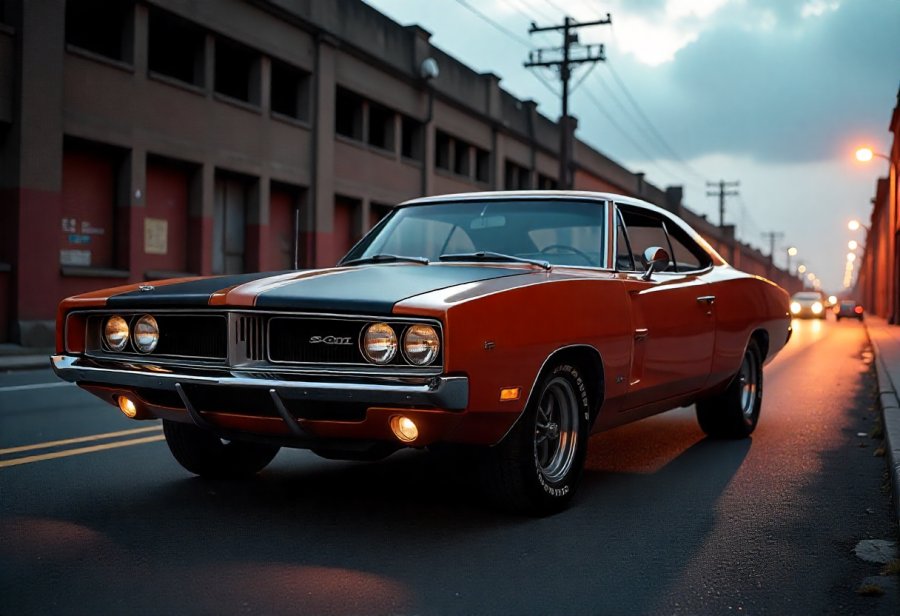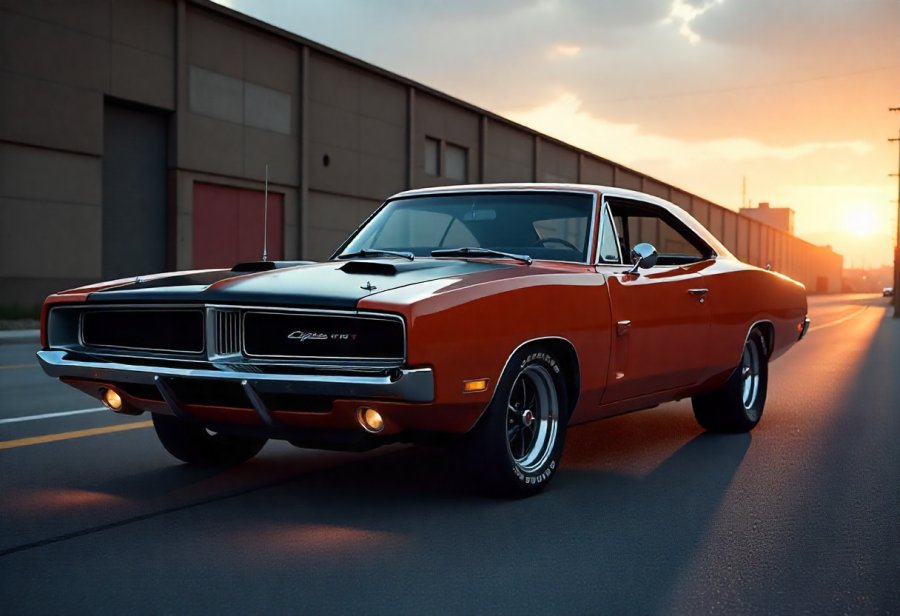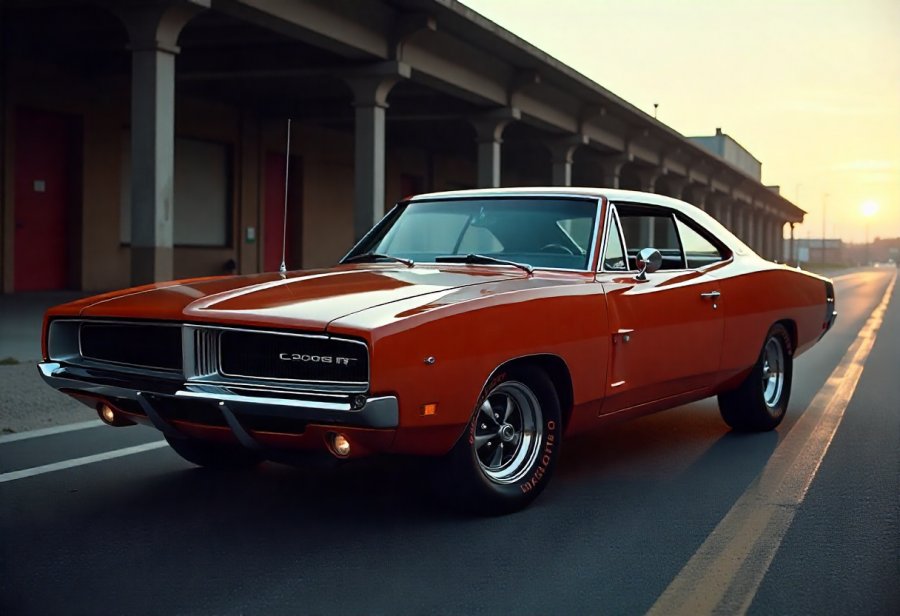Is the Dodge Charger merely a car, or does it embody the very essence of American muscle and rebellious spirit? From its iconic roots in the late 1960s to its modern reinterpretations, this legendary vehicle stands as a symbol of freedom, power, and defiance. Its muscular design, thunderous engines, and pop culture presence evoke primal instincts—yet critics question if today’s models maintain the raw authenticity of the past or lean toward comfort and technology. As the Charger evolves, blending vintage aesthetics with cutting-edge performance, it continues to inspire awe and debate: does it still roar with the same rebellious soul, or has it become a refined, high-tech cruiser? This tension between myth and reality fuels its enduring legend, inviting enthusiasts and skeptics alike to explore whether the Charger remains a true icon of American muscle or just a mythic symbol of rebellion reborn.

Unleashing the Spirit of American Rebellion: The Dodge Charger’s Cultural Legacy
The Dodge Charger isn’t just a car; it’s an icon that embodies the very soul of American muscle and rebellion. From its debut in the late 1960s, the Charger has stood out as a symbol of freedom, strength, and individuality. Its bold, aggressive design and thunderous engine sounds make it impossible to ignore, turning heads wherever it appears. Over the decades, it has maintained its reputation as a raw power machine that inspires a primal sense of excitement in drivers and fans alike.
When the Charger first hit the streets in 1966, it marked Chrysler’s bold entry into the muscle car scene. Its sleek, muscular stance and powerful engine options set it apart from other cars of its era. It wasn’t just about speed; it was about making a statement. The long hood, broad shoulders, and distinctive details like the four round taillights created a presence that’s become instantly recognizable. These design elements have helped define the Charger’s identity as a car built for attitude and performance.
The Charger’s design isn’t just visually striking—it’s a declaration of rebellion. Its wide stance, low profile, and muscular curves suggest a readiness to launch at any moment. Classic features like the bold grille and aggressive wheel arches reinforce its commanding presence. Every line and contour screams confidence and power, embodying a car that’s meant to dominate the road and challenge norms. It’s not just about aesthetics; those elements serve to underline the Charger’s reputation as a street racing beast and a cultural icon.
More than a machine, the Charger has become a symbol of independence and defiance. Its roaring engine sounds and bold styling evoke a sense of liberation on open highways. Its appearances in movies, music, and pop culture have cemented its role as a rebel and a symbol of freedom. Driving a Charger is about more than transportation—it’s a statement of individuality, a challenge to conformity, and a celebration of the primal instincts that drive us.
Throughout its history, the Charger has evolved while staying true to its rebellious roots. From vintage models powered by legendary engines like the 426 HEMI to today’s modern versions packed with advanced technology, each iteration reflects changing tastes but preserves the core attitude. Today’s Chargers blend classic aesthetics with modern performance, keeping the primal spirit alive and relevant for new generations. In essence, the Dodge Charger captures the unfiltered spirit of American muscle—raw, bold, and forever free.
The Heart of Power: Anatomy and Essence of American Muscle
American muscle cars are defined by their ability to deliver unfiltered power combined with bold, aggressive styling. At the heart of this reputation are engines that produce thunderous V8 sounds—big, naturally aspirated or supercharged—that unleash ferocious acceleration and demand attention. The Dodge Charger exemplifies this perfectly, with its muscular stance and wide, commanding body that signal a car built to dominate the road. These vehicles reject subtlety, instead making a statement with every line, curve, and detail, embodying a spirit of performance and rebellion.
The sound of the Charger’s engine is arguably its most iconic feature. Whether it’s the deep growl of a vintage HEMI V8 or the guttural snarl of a modern supercharged engine, that roar is a visceral expression of raw power. It’s more than noise; it’s a cultural badge of rebellion, asserting its place as a street racing beast that fuels adrenaline and stokes primal instincts. That thunderous growl is a signature—a reminder that this car isn’t just about transportation, but about making a bold, audible statement.
Design-wise, American muscle cars like the Charger emphasize width, low stance, and muscular curves. The bold grille, prominent wheel arches, and sleek roofline work together to create a silhouette that screams confidence and strength. These features aren’t just for show—they’re engineered to enhance aerodynamics and stability at high speeds. The Charger’s commanding presence makes it clear: this is a vehicle for those who want to stand out and own the road, not blend into the background.
More than aesthetics, the Charger symbolizes rebellion and independence. Its aggressive styling and thunderous engine sounds evoke a sense of freedom, pushing against societal norms. Driving a Charger is about more than just getting from point A to B; it’s a declaration of individuality. Its raw, primal appeal encourages owners to embrace their inner rebel, challenge conventions, and make a statement wherever they go—cementing its status as a cultural icon of American muscle.
Throughout its history, the Charger has maintained its core identity while evolving with the times. Vintage models from the late ’60s showcased rugged aesthetics with legendary engines like the 426 HEMI, delivering thunderous acceleration. Today’s Chargers blend this heritage with cutting-edge technology, sleek aerodynamics, and modern performance features like supercharged V8s. This evolution allows the car to uphold its rebellious roots while appealing to contemporary drivers, proving that true muscle cars can grow without losing their primal essence.
At its core, the Dodge Charger is more than just a machine; it’s an expression of American muscle’s soul. It embodies power, attitude, and a desire to stand apart. Its roaring engines and muscular design serve as symbols of primal road power, appealing to those who crave speed and rebellion. From vintage legends to modern performance beasts, the Charger continues to inspire a sense of freedom and individuality, cementing its place as a defining icon of muscle car rebellion.

Myth Versus Reality: The Challenges and Contradictions of the Charger Legend
The reputation of the Dodge Charger isn’t without its critics or challenges. While many see it as the ultimate symbol of American muscle and rebellion, some argue that its legendary status has been heavily mythologized over the years. Critics point out that not all Chargers live up to their iconic image, especially when it comes to modern models that prioritize comfort, technology, and safety over raw performance. The focus on refinement can sometimes dilute the car’s primal appeal, making it feel more like a high-tech cruiser than the street racing beast it once was.
There’s also a practical side to consider. These cars are loud, fuel-hungry, and often less reliable as daily drivers. High-performance versions like the Hellcat, while impressive on paper, require significant maintenance and can be costly to keep running at peak levels. For many owners, the thrill of driving a Charger comes with the reality of dealing with frequent repairs and high fuel consumption, which can clash with the myth of invincibility that surrounds the car’s reputation.
Some skeptics believe media and marketing hype have exaggerated the Charger’s street racing legend. While it certainly delivers on performance, the idea that every modern Charger is a relentless street racer isn’t entirely accurate. Many owners use their vehicles for daily commuting, where comfort and convenience take precedence. This disconnect between the myth and everyday reality fuels a divide, with some questioning whether the Charger’s reputation truly matches how it’s used.
The rebellious image of the Charger also attracts criticism for encouraging reckless driving. Its association with street racing and defiant attitudes can promote stereotypes of thrill-seekers pushing limits illegally. Although the car’s attitude is part of its appeal, this perception can overshadow the craftsmanship and safety features modern models offer, complicating the image as a responsible performance vehicle.
Shifting automotive trends add another layer of complexity. Modern Chargers incorporate advanced safety and driver-assist systems that move away from the pure, unfiltered muscle car experience of the past. For enthusiasts, this raises questions about whether today’s Chargers still carry the same primal DNA or if they’ve become more refined and less raw. The myth of the street racing beast persists, but the reality is more nuanced and layered.
Moreover, the emphasis on comfort and technology has led some to see the Charger as less authentic. As the muscle car segment evolves, critics wonder if the essence of primal road power can survive in a landscape dominated by emissions regulations, safety standards, and eco-consciousness. These developments challenge the core identity of the Charger as a symbol of rebellion and raw power.
Despite these challenges, the Charger’s cultural influence remains strong. Its presence in movies, music, and social media helps sustain its legendary status, even as its form and function adapt. The debate over its authenticity doesn’t diminish its iconic role but highlights the ongoing tension between myth and reality that keeps the Charger relevant.
In the end, the Dodge Charger’s legacy is a blend of myth and fact. While some doubts about its rawness and practicality are fair, they don’t erase the car’s enduring appeal. It continues to symbolize American muscle, rebellious spirit, and a desire to break free from norms—qualities that resonate far beyond the pavement.
Reviving the Legend: How the Dodge Charger Continues to Define Modern Muscle
The Dodge Charger continues to hold a commanding presence in today’s automotive landscape, seamlessly blending its timeless design with cutting-edge performance technology. Its iconic long-hood silhouette remains, but modern tweaks—like aerodynamic enhancements—improve handling, efficiency, and stability. This fusion of classic styling and contemporary engineering ensures the Charger’s primal spirit stays alive while making it more practical for everyday driving.
On the streets and highways, the Charger’s bold stance and muscular lines still turn heads, transforming routine commutes into moments of rebellion. High-performance variants like the Hellcat and Widebody versions push the boundaries of speed and raw power, reinforcing its reputation as a modern street racing beast. These models stay true to the car’s rebellious roots, embodying the primal road power that made the Charger a legend decades ago.
Despite its evolution, the Charger’s core image of American muscle remains intact. Its appearances in movies, music videos, and social media help keep the legend alive, making owning one more than just a choice of transportation—it’s a statement of attitude and independence. For many drivers, it’s about challenging norms and expressing individuality with every drive.
Technology has played a key role in this ongoing relevance. Features like adaptive suspension, advanced infotainment, and driver-assist systems enhance comfort, convenience, and safety—all while preserving the car’s aggressive performance. This balance appeals to both enthusiasts seeking thrill and everyday drivers wanting a bold yet reliable machine, ensuring the Charger remains accessible without losing its rebellious edge.
The Charger’s influence extends beyond individual owners. Its bold design and high-performance standards continue to inspire the automotive industry, prompting competitors to prioritize striking aesthetics and powerful engines. Its presence in pop culture keeps the legend vibrant, shaping trends and expectations for muscle cars across the market.
Ultimately, the Dodge Charger proves that a muscle car can be more than a relic of the past. It remains a symbol of freedom, rebellion, and primal power—timeless qualities that resonate with new generations of drivers. As it continues to evolve, the Charger’s relevance and impact only grow, cementing its status as an enduring icon that embodies the spirit of American muscle in the modern age.

Enduring Power: The Lasting Impact and Symbolism of the Dodge Charger
The Dodge Charger’s legacy runs deep, rooted in its ability to embody the raw, untamed spirit of American muscle. Over the years, it has become more than just a high-performance vehicle; it’s a symbol of freedom, rebellion, and individuality that continues to inspire drivers and enthusiasts alike. Its powerful engines, aggressive design, and presence in popular culture have cemented its place as an enduring icon in automotive history.
What sets the Charger apart is its remarkable ability to evolve without losing its core identity. From the vintage models with legendary V8s to today’s modern incarnations packed with advanced technology, it has managed to stay relevant while honoring its rebellious roots. This balance allows it to appeal to nostalgic collectors and new generations seeking thrill and style wrapped in a bold package.
Beyond engineering, the Charger’s influence extends into the cultural fabric. Its appearances in movies, music, and social media keep the legend alive, reinforcing its role as a rebellious symbol of American muscle. This cultural resonance ensures that the Charger remains not just a car, but a movement—challenging norms and celebrating individuality.
Driving a Dodge Charger is more than a matter of transportation; it’s a declaration of independence. Its roar, design, and attitude serve as reminders that true muscle cars are about primal instincts—power, speed, and standing out. The Charger encourages owners to challenge conventions and embrace their inner rebel, transforming every journey into an act of self-expression.
Its story is one of resilience and innovation, continuously pushing boundaries while staying true to its roots. The Charger’s influence shapes the automotive industry, inspiring competitors and setting new standards for performance and aesthetics. Its ongoing presence in pop culture and media sustains its legendary status, fueling the myth and reality in equal measure.
The enduring appeal of the Dodge Charger lies in its ability to connect with the primal instincts shared by drivers worldwide—desire for power, desire for freedom, and the thrill of standing apart. It’s more than a car; it’s a cultural icon that embodies the spirit of American muscle. As new models continue to push boundaries, the Charger’s legacy remains as potent as ever—an everlasting symbol of rebellion and raw power.
In the end, the Charger’s story is one of timeless inspiration. It has managed to stay true to its roots while adapting to modern demands, proving that true muscle cars are more than just machines—they’re symbols of attitude, freedom, and the unbreakable spirit of rebellion. The Dodge Charger will keep igniting primal instincts for generations to come, standing firm as a testament to the enduring power of American muscle.